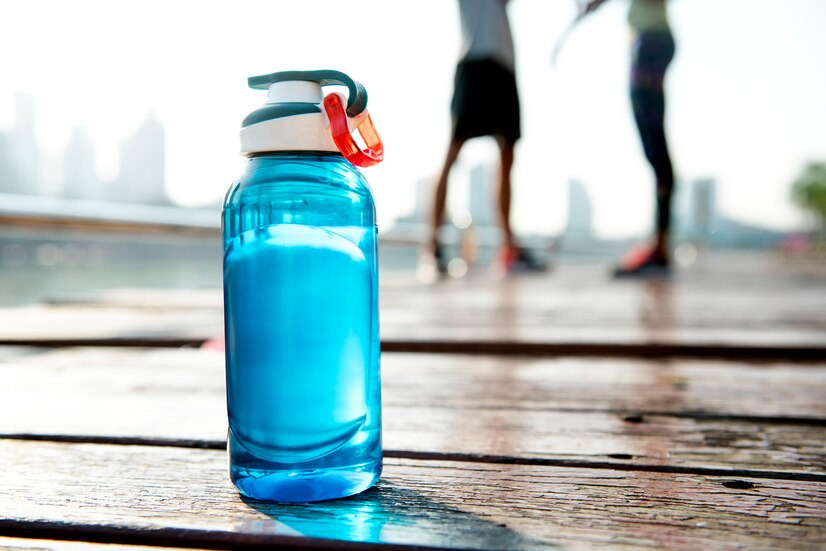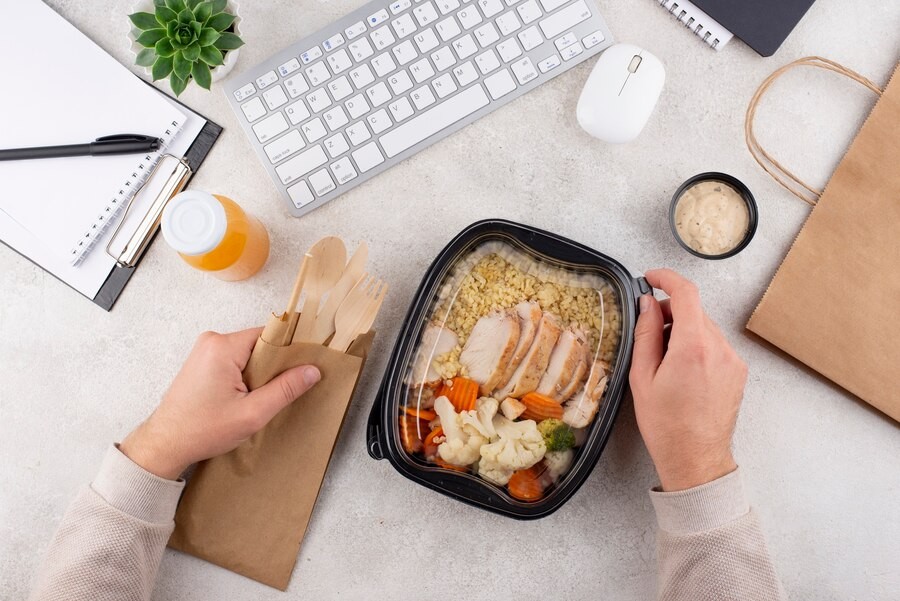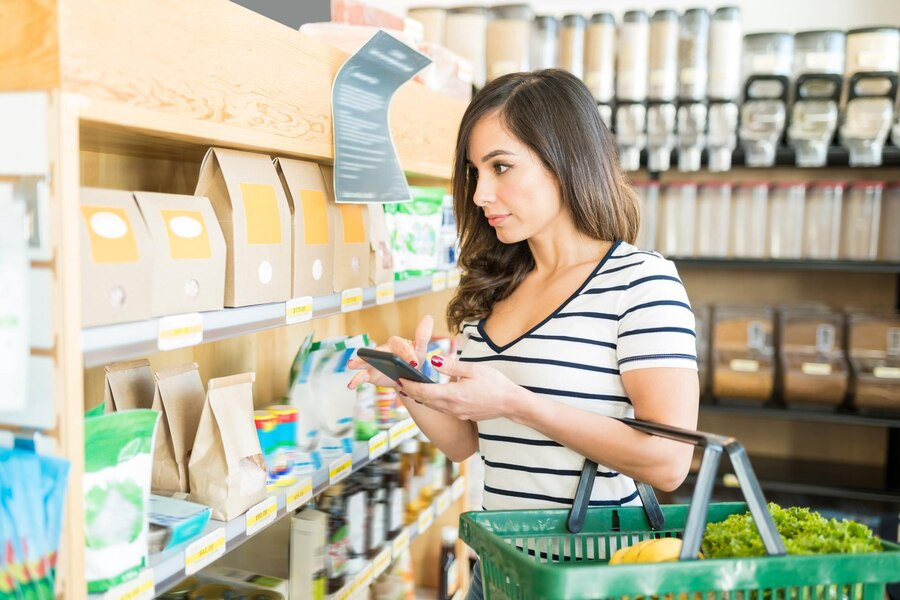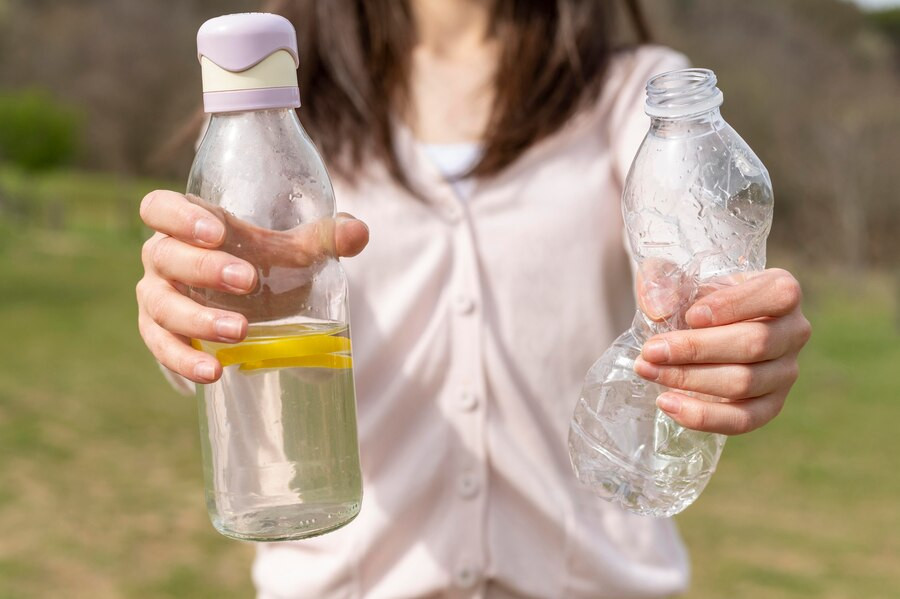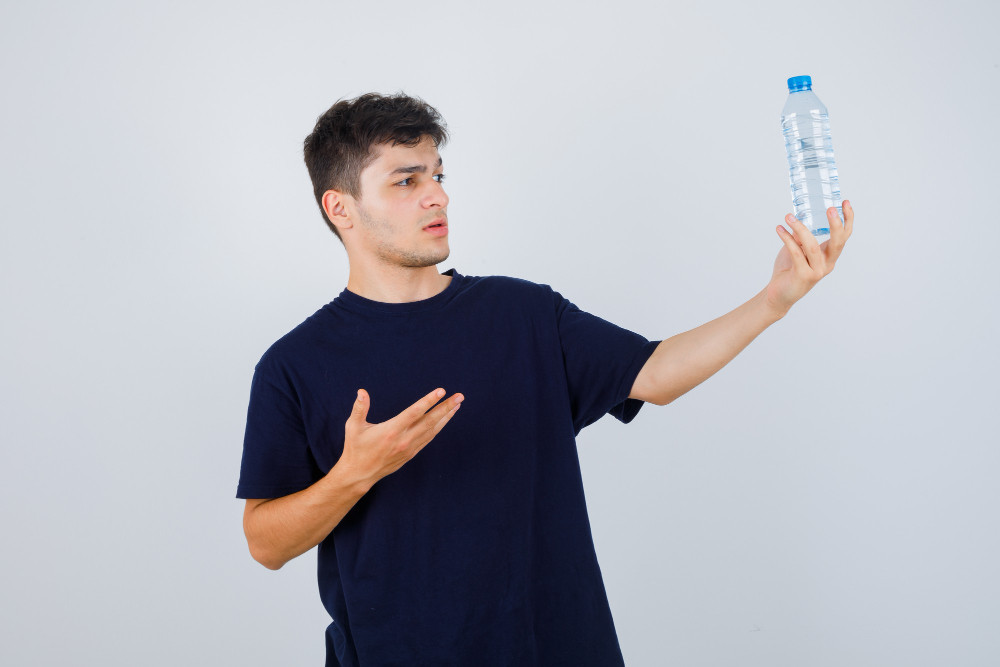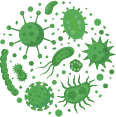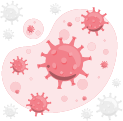Nowadays, many trendy plastic water bottles with attractive designs are available. Some bottles even have markers to help you meet your daily water intake. Unfortunately, not all of these trendy plastic bottles are safe for repeated use. You need to know which types of bottles are safe for reuse.
Bottle Codes and Types
Plastic bottles are made from various materials, including resins and organic compounds. They have a recycling code printed on the bottom that indicates the type of plastic used. The most common codes are:
- Code 1 PET/PETE (Polyethylene Terephthalate)
- Code 2 HDPE (High-Density Polyethylene)
- Code 3 PVC (Polyvinyl Chloride)
- Code 4 LDPE (Low-Density Polyethylene)
- Code 5 PP (Polypropylene)
- Code 6 PS (Polystyrene)
- Code 7 Others
Bottles on the market are typically made from plastics with codes 1, 2, and 7. Let’s examine which ones are safe for your health.
Plastic Bottles That Should Not Be Used as Water Bottles
Code 1 PET/PETE (Polyethylene Terephthalate)
If you see a code 1 on your plastic bottle, it is made from PET. This type of plastic is very lightweight and typically used for bottles containing sauces, peanut butter, and other food packaging. If your water bottle has this code, it is not suitable for repeated use as a drinking bottle.
Code 2 HDPE (High-Density Polyethylene)
If your plastic bottle shows code 2, it is made from HDPE, a sturdier and more durable type of plastic. This plastic is commonly used for detergent bottles, soap containers, and gallon water bottles. HDPE contains nonylphenol, which is known to pose risks to aquatic life and may also affect the endocrine system, which regulates hormones.
Code 7 - Other Materials
Bottles with code 7 are often made from polycarbonate or epoxy resins containing BPA. A small amount of BPA can leach from plastic containers into the liquids or foods they hold. BPA has been linked to disruptions in the endocrine system, which regulates hormones. Many people avoid products containing BPA due to potential hormone imbalances.
Best Plastic Bottles Options for Safe Reuse
The safest plastic bottles for reuse are those with code 4, made from Low-Density Polyethylene (LDPE). LDPE is a thinner type of plastic with high heat resistance and is used for food packaging, coffee can lids, bread bags, soda cans, and more. The FDA has approved LDPE as safe for food and beverage containers.
Let’s be more mindful when choosing water bottles and food packaging for daily use. Check the plastic codes on the packaging and don't be swayed only by low prices and trendy designs!
Looking for more tips and tricks for health, first aid, and other home remedies? Click here!
- dr. Monica Salim
Cancer Council. Does drinking water from plastic drink bottles cause cancer?. Available from: https://www.cancer.org.au/iheard/does-drinking-water-from-plastic-drink-bottles-cause-cancer
Corey Whelan (2019). Is It Safe to Reuse Plastic Bottles?. Available from: https://www.healthline.com/health/reusing-plastic-bottles
WebMD (2021). Is it Safe to Reuse Plastic Water Bottles?. Available from: https://www.webmd.com/a-to-z-guides/is-it-safe-to-reuse-plastic-water-bottles
Rainoflife. Reusable bottles: are they safe for health?. Available from: https://rainoflife.com/en/reusable-bottles-are-they-safe-for-health
Chemical Safety Facts.org (2022). Types of Plastic Food Packaging and Safety: A Close-Up Look. Available from: https://www.chemicalsafetyfacts.org/health-and-safety/types-of-plastic-food-packaging-and-safety-a-close-up-look/

